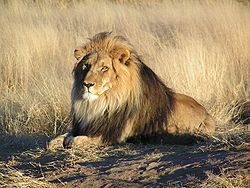
Arly-Singou
Encyclopedia

Ecosystem
An ecosystem is a biological environment consisting of all the organisms living in a particular area, as well as all the nonliving , physical components of the environment with which the organisms interact, such as air, soil, water and sunlight....
is a protected area
Protected area
Protected areas are locations which receive protection because of their recognised natural, ecological and/or cultural values. There are several kinds of protected areas, which vary by level of protection depending on the enabling laws of each country or the regulations of the international...
complex located in Burkina Faso
Burkina Faso
Burkina Faso – also known by its short-form name Burkina – is a landlocked country in west Africa. It is surrounded by six countries: Mali to the north, Niger to the east, Benin to the southeast, Togo and Ghana to the south, and Côte d'Ivoire to the southwest.Its size is with an estimated...
, and is considered to comprise part of the most significant and important savanna
Savanna
A savanna, or savannah, is a grassland ecosystem characterized by the trees being sufficiently small or widely spaced so that the canopy does not close. The open canopy allows sufficient light to reach the ground to support an unbroken herbaceous layer consisting primarily of C4 grasses.Some...
woodland
Woodland
Ecologically, a woodland is a low-density forest forming open habitats with plenty of sunlight and limited shade. Woodlands may support an understory of shrubs and herbaceous plants including grasses. Woodland may form a transition to shrubland under drier conditions or during early stages of...
wildlife areas still existing in that region of the African continent
Africa
Africa is the world's second largest and second most populous continent, after Asia. At about 30.2 million km² including adjacent islands, it covers 6% of the Earth's total surface area and 20.4% of the total land area...
. The ecosystem shelters what is considered to be the largest population of lion
Lion
The lion is one of the four big cats in the genus Panthera, and a member of the family Felidae. With some males exceeding 250 kg in weight, it is the second-largest living cat after the tiger...
s (Panthera leo) still remaining in West Africa, with estimates varying substantially between 100 and 400 (approx.) individual members of the species existing within the area. These estimates were based on two surveys which were undertaken; while the African Lion Working Group (Bauer and Van Der Merwe 2004) approximate that there are 100 lions in the area, Chardonnet (2002) claims that there are a far more lions in the area, with an estimate of 404.
These numbers of lions represent a great deal of the total population of lions in West Africa; there have been estimates of somewhere between 850 and 1,160 remaining lions in all of Western Africa, and the population existing in Arly-Singou therefore plays host to a large amount of this total population, regardless of the veracity of these surveys.
The Arly-Singou project is considered to have taken a somewhat new initiative in structure, in regard to wildlife management undertakings funded by the government
Government
Government refers to the legislators, administrators, and arbitrators in the administrative bureaucracy who control a state at a given time, and to the system of government by which they are organized...
in the area. However, the project also permits private operators to share and hold authority of the area's management, in a bid to take advantage of the benefits of greater external funds, from these operators.
While lions constitute much of the animal population living in the Arly-Singou area, 1980 aerial observations revealed that the largest population of antelope
Antelope
Antelope is a term referring to many even-toed ungulate species indigenous to various regions in Africa and Eurasia. Antelopes comprise a miscellaneous group within the family Bovidae, encompassing those old-world species that are neither cattle, sheep, buffalo, bison, nor goats...
s in the entire region were inhabiting the protected ecosystem, and more recent studies (Belemsobgo and Chardonnet 1996) indicate that this flourish in antelope population has been sustained in the Arly-Singou since the initial observations.
Previously the endangered Painted Hunting Dog, Lycaon pictus occurred in Burkina Faso within the Arly-Singou ecosystem
Ecosystem
An ecosystem is a biological environment consisting of all the organisms living in a particular area, as well as all the nonliving , physical components of the environment with which the organisms interact, such as air, soil, water and sunlight....
, but, although last sightings were made in Arly
Arli National Park
Arli National Park often Arly is a national park located in southeastern Burkina Faso. It adjoins Benin's Pendjari National Park in the South and the Singou Reserve in the West....
, the species is considered extirpated
Extinction
In biology and ecology, extinction is the end of an organism or of a group of organisms , normally a species. The moment of extinction is generally considered to be the death of the last individual of the species, although the capacity to breed and recover may have been lost before this point...
throughout Burkina Faso.

